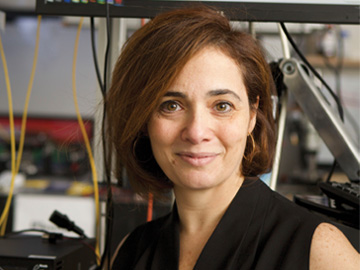
Like many readers of Optics & Photonics News, I look forward to this month’s CLEO Conference and Exhibition, which will take place in San Jose, CA, USA, from 7 to 12 May. This meeting, which brings together science, engineering and applications, has always been close to my heart. I remember how nervous I was giving my first CLEO talk, as a student in 2000. Yet over the years, the people you interact with at such a yearly event become your community, and the meeting is an opportunity not just to share ideas but to see old friends.
A meeting like CLEO is also, of course, a chance to meet new people and to be exposed to new perspectives. And that inevitably calls to mind a long-standing issue for our field: the need to increase its diversity and make science and engineering welcoming to all.
A recent report from the US National Science Foundation (ncses.nsf.gov/pubs/nsf23315/) gives some reason to hope that things are getting better—but also shows how far we have to go. The report found sometimes substantial increases in the 2011–2021 period in the number of science and engineering degrees earned and jobs held by women, as well as by Black, Hispanic, American Indian and Alaska Native people. Yet these groups all remain sorely underrepresented in STEM fields, including in our community.
Such disparities are something that a global society like Optica, and the broader population it serves, must continually strive to eliminate. Optica has stepped up in recent years with a variety of programs toward that end. These include its “Amplify” scholarship, publishing grants and immersion program for Black scientists and students; Optica Women Scholars grants, travel grants and other assistance to women scientists and those trying to balance careers and family obligations; and a range of efforts to make Optica and its governance structures more diverse.
The goal of diversity also extends to the international sphere, and to bringing scientists from different countries together. This can have a transformative impact. One of the plenary speakers at CLEO this year will be Gihan Kamel, the IR beamline principal scientist for the SESAME synchrotron light source. This remarkable facility, which began operation in Allan, Jordan, almost exactly six years ago, is the product of collaboration between scientists from a variety of Middle Eastern countries whose governments have often been in conflict.
Also at CLEO 2023, several panel discussions will highlight opportunities to improve diversity in our field—both in strengthening the educational pipeline for women and underrepresented groups in STEM and in fostering diverse teams in the workplace. I’m proud to be associated with a society, and a community, that advances such initiatives. Inevitably, progress will be incremental—but such small steps will, I believe, take us to a better future.
Even as we look toward that future, there’s also value in sometimes looking back. I encourage you to read the profiles of six Black pioneers in optical and photonic science that begin on p. 34 of this issue of OPN. Their pathbreaking accomplishments, and their perspectives on the changes they’ve seen across their long careers, are a welcome reminder of how diversity, inclusion and equity strengthen our science and our society.
—Michal Lipson,
Optica President
View French, Chinese, German, Japanese and Spanish translations of this message:
